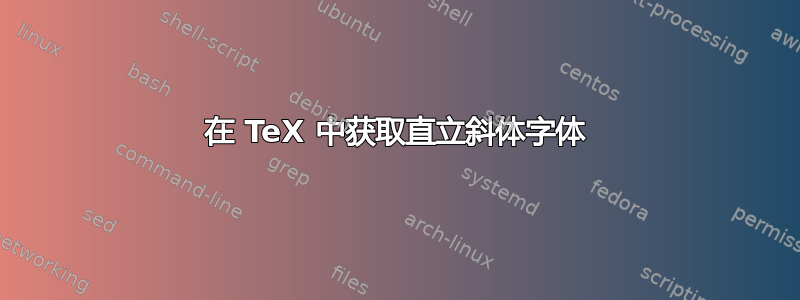
答案1
教科书来源在 ctan 上,你会发现
Notice that two of these faces have an ``^{oblique}'' slope for emphasis:
{\sl ^{Slanted type} is essentially the same as roman, but the letters are
slightly skewed, \it while the letters in ^{italic type} are drawn in a
different style.} \ (You can perhaps best appreciate the difference between
the roman and italic styles by contemplating {\tenu letters that are
in an unslanted italic face.})
manmac.tex有
\font\tenu=cmu10 % unslanted text italic
因此以下纯文本文档
\font\tenu=cmu10 % unslanted text italic
Notice that two of these faces have an oblique slope for emphasis:
{\sl Slanted type is essentially the same as roman, but the letters are
slightly skewed, \it while the letters in italic type are drawn in a
different style.} \ (You can perhaps best appreciate the difference between
the roman and italic styles by contemplating {\tenu letters that are
in an unslanted italic face.})
\bye
在 LaTeX 中,斜体是ui字体形状,因此
\documentclass{article}
\begin{document}
\textit{slanted italic} {\fontshape{ui}\selectfont upright italic}
\end{document}
答案2
请注意,这是一个 LaTeX 答案,跟进了评论中的讨论大卫的回答。
cfr-lm\textui{}为拉丁现代提供\uishape,其中也包括这种形状。
\documentclass{article}
\usepackage{cfr-lm}
\begin{document}
Latin Modern also includes an \textui{upright italic} which is supported by \texttt{cfr-lm}.
{\itshape Some italic text of the regular sort, \upshape some upright and \uishape some upright italic.}
\end{document}






